End of the Pits
SUMMIT CAMP, GREENLAND– On Friday, we finished up our big 3 meter pit. We had to dig out the last little bit of it, which Maria and Elyse were able to do by sawing out blocks and carrying them out of the pit.
We’ve done density, air permeability, thermal conductivity and grain size measurements. We use these measurements to help better predict the movement of gases in the snow, and to compare how these measurements have changed over time.
I made the same measurements in pits at the same location the last two years, placing a bright string tied to bamboo poles at the snow surface each year. I was able to find both strings in the pit—a bright pink from last year and a bright yellow string from the year before– which was exciting.
Maria, Kristina and Elyse worked on drilling 3 meter cores using a hand auger while I finished up a back-lit pit. I’ll do the same measurements I did in the pit on the cores back in the lab in New Hampshire. This gives us replicate measurements. It’s hard to core the upper 2 meters, the snow tends to fall apart. Below that, the snow becomes harder and more compact, and not nearly as fragile.
A back-lit pit is made by first digging out one pit, then digging a second pit with about a one-foot-thick wall in between the pits. By smoothing out one wall, and covering the first pit, you allow the light from the open pit to filter through the common wall. The layering in the pit really stands out using this method. It also involves digging not one, but two pits. We were able to use the second pit as a lab to make measurements, so it was definitely worth it!
Craig Beals, a high school earth science teacher from Billings, Montana who is up here with Jack Dibb and Barry Lefer’s photochemistry group, came by after lunch to visit our pit. Craig is here through the Polar Trec project, which links teachers and researchers. I think he was impressed with our pit—he definitely wasn’t expecting the huge hole that we had dug. He’s six feet tall, and couldn’t reach the top of it standing on the bottom (we’ve been using a ladder to cut out samples from the wall and to make measurements).
We worked through dinner and late into the night to try to finish everything up before a predicted storm. We were all very tired and hungry by the end of the day, but nothing that a little food and rest can’t fix.


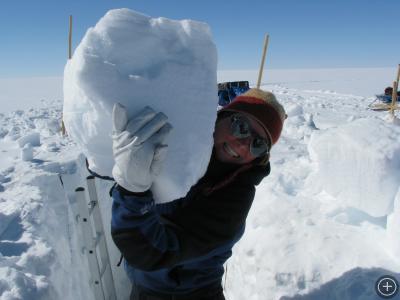
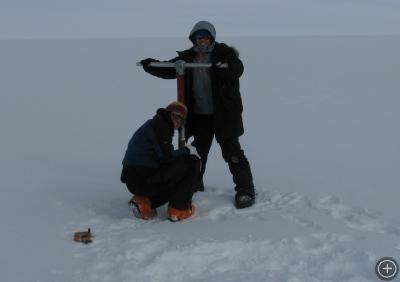
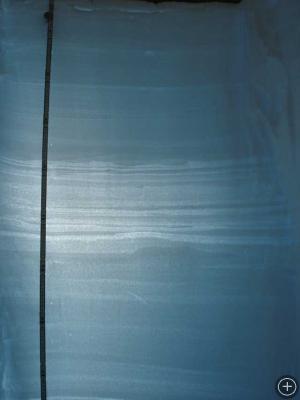


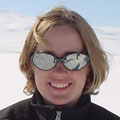

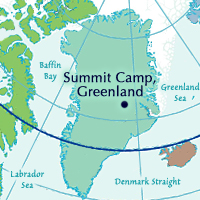





Love the backlighting! That would be a great wall hanging design. Great work, Zoe.
j and b